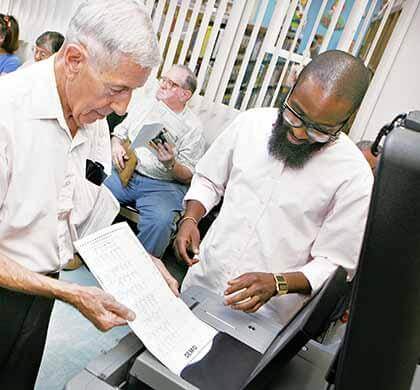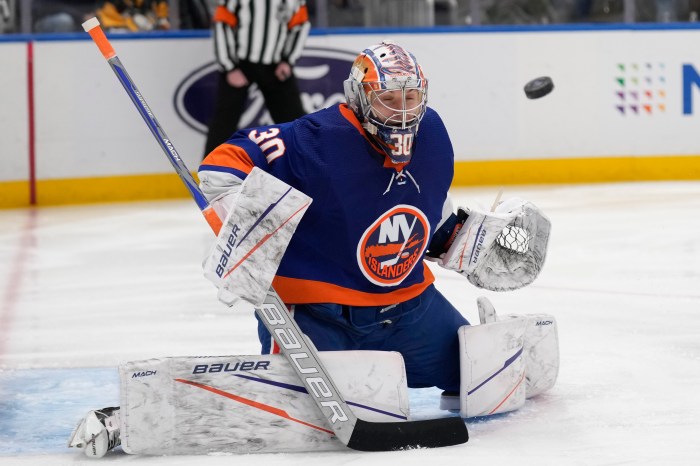By Anna Gustafson
The machine, they said, looked suspect.
It sat in the corner of the Maspeth Library’s conference room, looking like a small gray and black laptop and nothing like the big, bulky voting machines with the red levers city voters have been used to navigating for the past five decades.
It inspired trepidation, this little scanner that quickly devoured the ballots fed to it, according to many of the people who attended a tutorial at the library Sept. 1 on the new voting machines that will be used for the first time in next week’s primary elections. A number of those in the crowd laughed with disbelief when city Board of Elections Communication Director Valerie Vazquez-Rivera told them it was easy to use as she inserted the sample ballots that the machine snapped up at a disarmingly fast rate.
But the tutorial participants said it turned out Vazquez-Rivera seemed to be right.
“I thought it was going to be very confusing, but it was actually very easy,” Forest Hills resident Barbara Reisch said. “I’m looking forward to seeing how it works out in the primary.”
Reisch will probably be working at a poll site during the Sept. 14 primary, provided she passes an exam administered by the city BOE following a six-hour class on the system mandated for any poll worker.
“It’s very simple, very convenient, very easy,” said Joan Jokl of Middle Village. “It’s definitely an improvement. People are reluctant to change, but it’ll probably be easier than what we had.”
Reactions like this are exactly what BOE officials and legislators are hoping for as they work their way around the borough and city, trying to inform voters of the changes coming on Primary Day. The new system, mandated by the federal Help America Vote Act, makes voters select their candidates by filling out ovals — something reminiscent of multiple choice tests — on a paper ballot that is fed into the scanner.
The scanner then records the voter’s choice and the physical evidence of the ballot will remain — one of the main stipulations of the federal act, which was passed in part as a response to the confusion over the ballots in the 2000 presidential election.
“This is not as bad as people think it is,” said George Gonzalez, executive director of the BOE. “It’s very simple compared to the lever machine. You’re intimidated at first, but once you play around with it, you become comfortable.”
Borough residents at the Sept. 1 tutorial filled out sample ballots during the tutorial, filling out circles for such categories as best ice cream flavor, best vacation destination and best sport. After filling out the ballot, residents fed it into the machine, which would tell them their vote had been counted. If a voter makes a mistake, he or she has a chance to have the ballot returned and to fill out a new ballot.
New York is one of the last states to comply with the HAVA, which was passed in 2002, in part because of consternation among lawmakers about which machine to use. Lawmakers ended up agreeing on a machine called the DS200 made by an Omaha-based company called Elections Systems & Software.
“Why is New York state the last state to comply?” said state Sen. Joseph Addabbo (D-Howard Beach), who attended the tutorial. “Because we wanted to make sure we made the right choice. We’re hopeful here we made the right choice, and making sure we have a flawless primary and general election day is our goal.”
State Assemblywoman Margaret Markey (D-Maspeth), who helped to sponsor the Sept. 1 event, said she does not expect there to be much of a learning curve on Primary Day.
“It’s a little intimidating until you use it for the first time,” Markey said. “You’ll love it when you use it.”
Reach reporter Anna Gustafson by e-mail at agustafson@cnglocal.com or by phone at 718-260-4574.

































